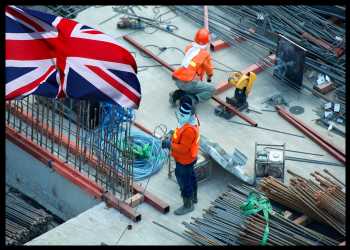UK Construction Growth Slows On Housing Downturn, Weak Demand
The British construction sector expansion slowed in August as the growth in the commercial and civil engineering segments were not strong enough to offset a steep slump in house building and sharply weakening demand due to rising borrowing costs, the purchasing managers’ survey results from S&P Global showed on Wednesday.
The Chartered Institute of Procurement & Supply Construction Purchasing Managers’ Index, or PMI, dropped to 50.8 in August from 51.7 in July. The score was expected to fall to 50.5.
A reading above 50 suggests growth, while any score below 50 indicates contraction in the sector.
“Though the construction sector overall showed an improvement in August, several imbalances in the figures give cause for concern,” CIPS Chief Economist John Glen said.
Among the three main categories of the UK CIPS/S&P Global PMI, the commercial building activity continued to grow strongly in August, and civil engineering output also increased, although the rate of growth was the lowest in four months.
Meanwhile, the house building activity was the weakest performing segment, with the pace of downturn being the second-fastest since May 2020. The negative contribution was attributed to subdued market conditions and a headwind to activity from cutbacks to new build projects.
Total new orders received by British construction companies dropped marginally in August, which was the worst fall since May 2020.
Rising interest rates and concerns about the near-term economic outlook were behind the more cautious spending among clients, especially in the residential building segment, the survey said.
Employment across the sector rose only moderately in July, and the rate of job creation eased since July.
The upturn in sub-contractor usage also softened in August, leading to the sharpest rise in availability since January 2010, the survey said.
Suppliers’ delivery times for construction products and materials, meanwhile, improved at a robust pace due to improved stock availability and fewer pressures on supplier capacity.
Input costs in the construction sector stabilized as a result of an improved balance between supply and demand. Input price inflation softened in August amid more competitive market conditions and successful price negotiations with suppliers to account for falling raw material costs.
Construction companies were relatively cautious about the outlook for business activity over the next year amid concerns about the impact of rising borrowing costs and subdued housing market conditions.
Source: Read Full Article




